
- Home
- India
- World
- Premium
- THE FEDERAL SPECIAL
- Analysis
- States
- Perspective
- Videos
- Sports
- Education
- Entertainment
- Elections
- Features
- Health
- Business
- Series
- In memoriam: Sheikh Mujibur Rahman
- Bishnoi's Men
- NEET TANGLE
- Economy Series
- Earth Day
- Kashmir’s Frozen Turbulence
- India@75
- The legend of Ramjanmabhoomi
- Liberalisation@30
- How to tame a dragon
- Celebrating biodiversity
- Farm Matters
- 50 days of solitude
- Bringing Migrants Home
- Budget 2020
- Jharkhand Votes
- The Federal Investigates
- The Federal Impact
- Vanishing Sand
- Gandhi @ 150
- Andhra Today
- Field report
- Operation Gulmarg
- Pandemic @1 Mn in India
- The Federal Year-End
- The Zero Year
- Science
- Brand studio
- Newsletter
- Elections 2024
- Events
Lessons in tradition: A couple’s quest to keep Malayalam alive turns 10

On a humid April evening in 2016, a group of students of Malayalam Pallikkoodam — an initiative to promote Malayalam learning using the traditional methods of teaching — set off to Vellayani Kayal, the second-largest freshwater lake in Kerala, 10 km from Thiruvananthapuram. As dusk set in, the children noticed some ‘flickering glows’ around them. When they tried to catch them,...
On a humid April evening in 2016, a group of students of Malayalam Pallikkoodam — an initiative to promote Malayalam learning using the traditional methods of teaching — set off to Vellayani Kayal, the second-largest freshwater lake in Kerala, 10 km from Thiruvananthapuram. As dusk set in, the children noticed some ‘flickering glows’ around them. When they tried to catch them, the ‘glows’ changed their tracks with slight twists and turns. A seven-year-old managed to catch a ‘glow’ with his right hand but it flew away the moment he released his fingers. After a couple of hours of hide-and-seek with the ‘flickering glows’, the children thanked the natural magic. For many in the group, it was their first ‘encounter’ with the fireflies.
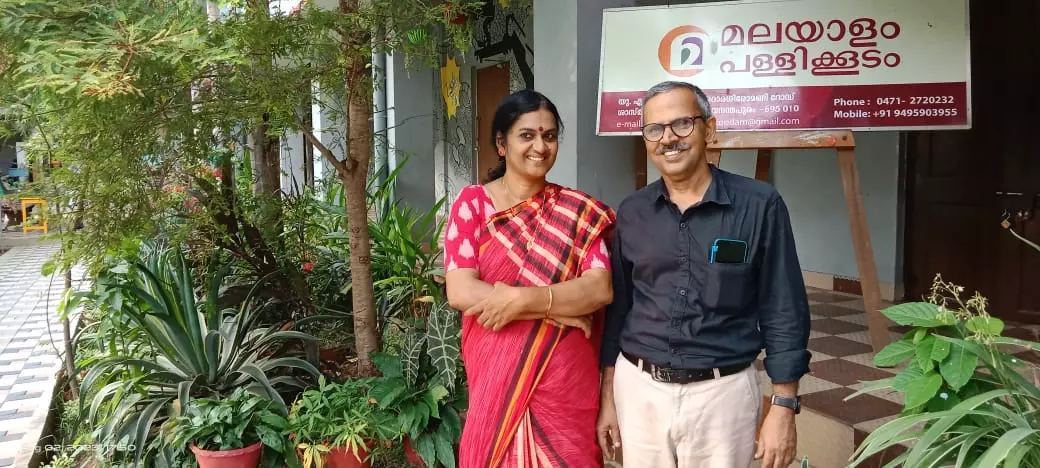
When P Gopinarayanan and Jessy Narayanan heard from their daughter that many of her friends were not able to read the name boards of buses written in Malayalam, the couple felt sad.
Once a frequent visitor to households after sunset, the population of these flying beetles has dropped due to light pollution, habitat loss and climate change. There are a number of stories associated with fireflies in every regional and folk literature, but they don’t serve any purpose if the students are not aware of their social and cultural history. Mother tongue plays an important role when it comes to cultural and social upbringing of a person. However, it takes a back seat today in many states, particularly in Kerala where the rate of youngsters leaving the state in search of better pastures is high. When P Gopinarayanan and Jessy Narayanan heard from their daughter that many of her friends were not able to read the name boards of buses written in Malayalam, the couple felt sad.
“When a language dies, something irreplaceable dies,” said Ganesh N Devy, a scholar who is best known for the ‘People’s Linguistic Survey of India’, which documented 780 living Indian languages a decade ago. In the landmark survey (the first linguistic survey of India was conducted by George Grierson, an Irish linguistic scholar and civil servant, during 1898 and 1928), Devy mentioned that we have lost more than 250 languages in the last 50 years and will lose more in the coming years. If the ‘trend’ goes unabated, the couple thought, there won’t be anyone to read Malayalam after 50 years. They wanted to find a solution to it.
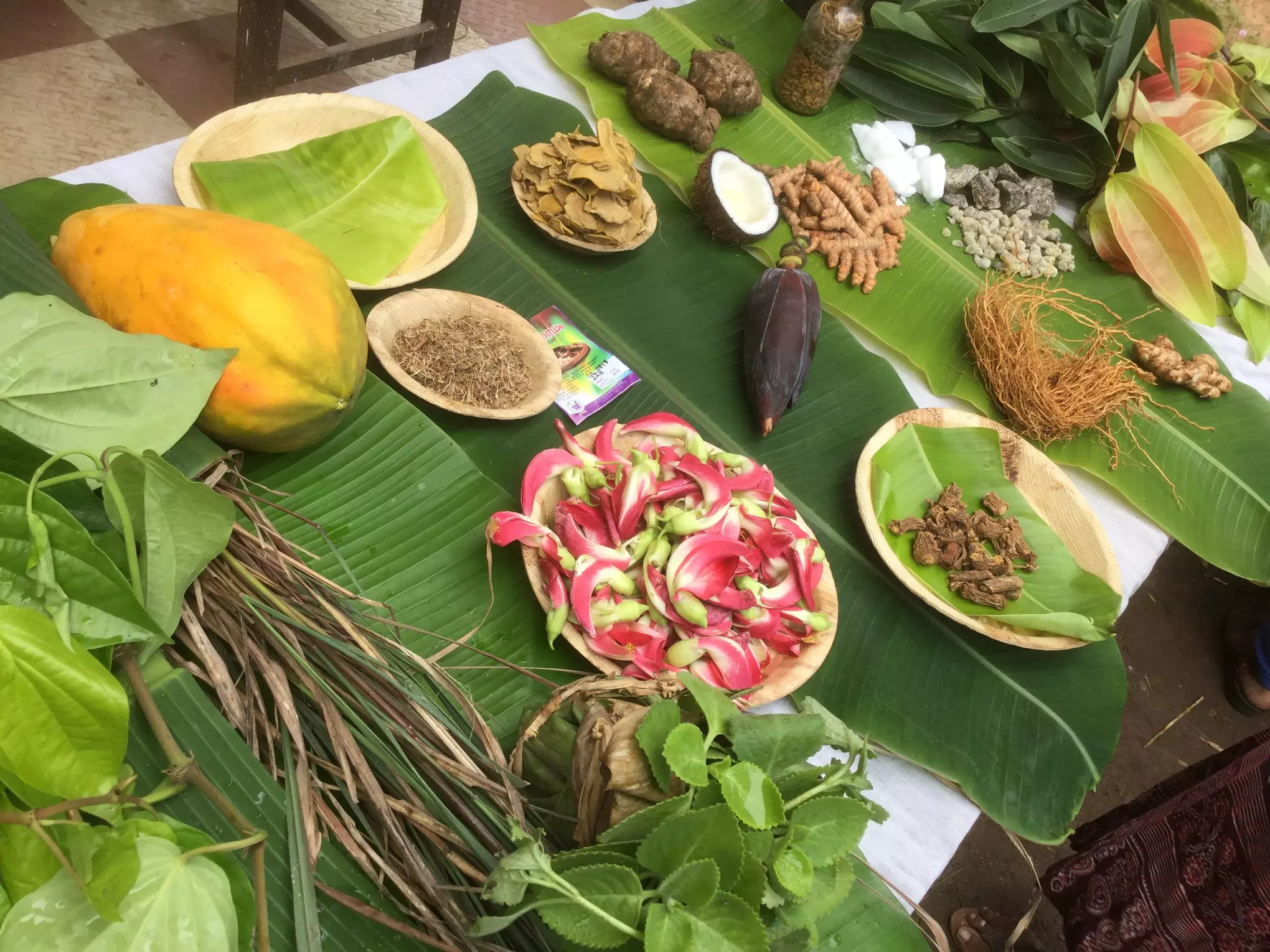
Children are introduced to local fruits and tubers at Malayalam Pallikkoodam.
With calligrapher artist Bhattathiri, the couple went to see renowned Malayalam poet ONV Kurup in 2014. Even though the poet was suffering from age-related illness, he supported the initiative and suggested V Madhusoodanan Nair, another popular Malayalam poet, to help them in their venture. With the help of Madhusoodanan Nair, filmmaker Adoor Gopalakrishnan, Bhattathiri and others, Gopi and Jessy launched Malayalam Pallikkoodam (school in Malayalam), at a hall opposite the AKG Centre in Thiruvananthapuram in 2014.
With more than 40 students, the first class was conducted at the Sree Sarada Devi Sisuvihar School in Vazhuthacaud in Thiruvananthapuram. As Gopi and Jessy were known to the literary circles (both have published books), they were able to get support from people belonging to various walks of life to their initiative. Adoor Gopalakrishnan gifted the couple a dozen slates (a thin piece of stone encased in a wooden frame used for writing) that he bought for shooting a movie decades ago. They also found great teachers like Vattaparambil Peethambaran (a scholar-teacher who is known for his excellent Malayalam pronunciation skills and demonstrative classes) to teach the students with traditional games, field-works and tours.
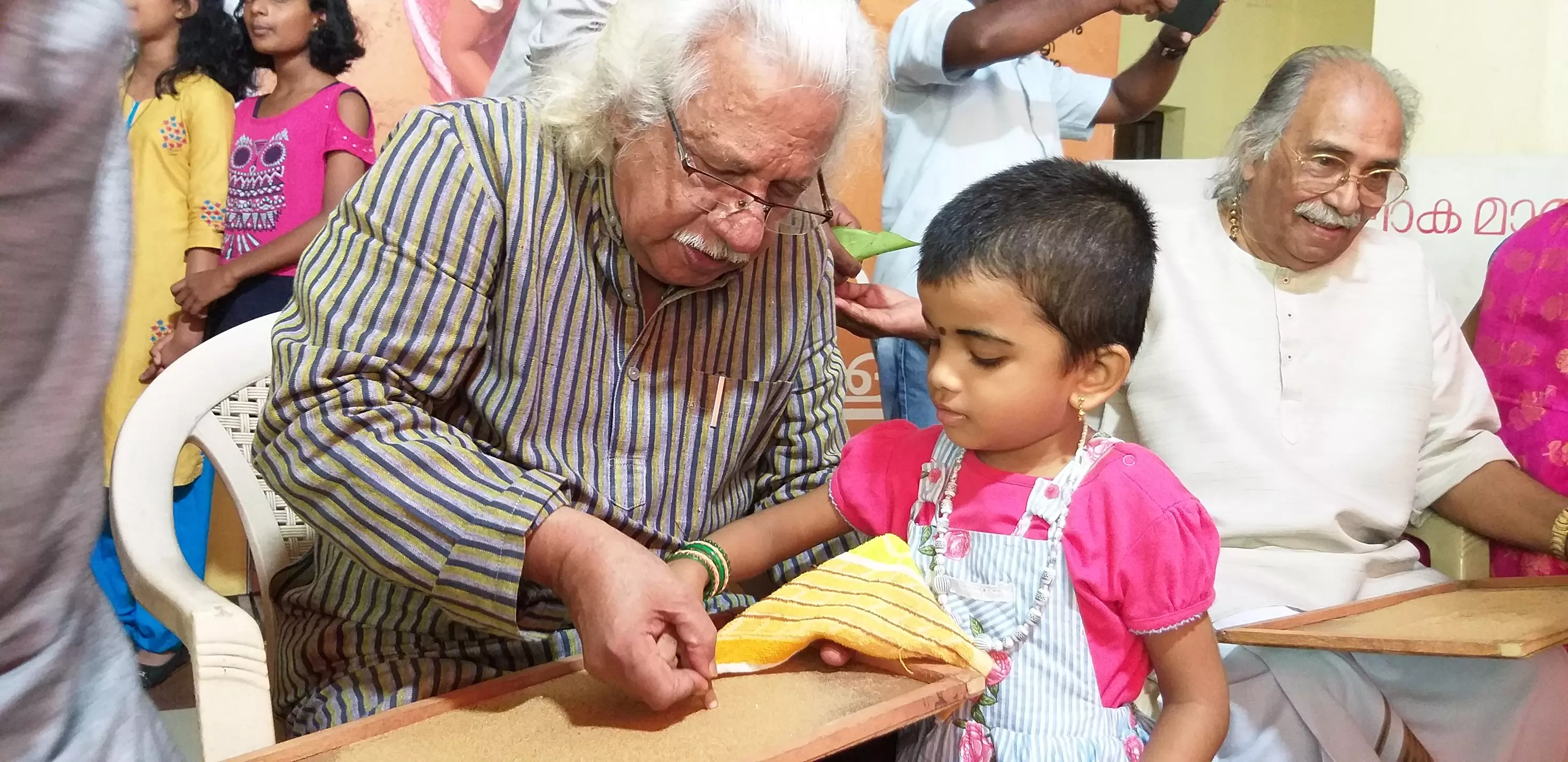
Adoor Gopalakrishnan helps a little one write Malayalam alphabets on a sand-tray.
As “Malayalam Pallikkoodam” completes a decade of service when it comes to the promotion of Malayalam learning among the youth, both Gopi and Jessy are happy. But there were challenges because it was not a language training centre where learning is a mechanical process. “The children are silent today. They don’t know how to make noise. Since they study all the subjects in English, they pick up that language first. They then learn their mother tongue Malayalam through this foreign language. And that’s the tragedy. We are happy that the school helped many students to pick up Malayalam during the last ten years,” said Gopi and Jessy.
At Malayalam Pallikkoodam, learning takes place through interactions, games, study tours and field works. The class is conducted every Sunday between 10am and 1pm at the Thycaud Government Model HSLP School in Thiruvananthapuram. There are four sections: A beginner will go to the Akshara Kalari, where he learns the alphabet of Malayalam through interactions, games and study tours. No pen, no pencil and no notebooks. The student (aged between 5 and 14) has to write the Malayalam alphabet on a tray filled with sand. “Writing on the sand makes one learn the art of writing quickly and neatly. As this is a traditional method, it is new for the children so they enjoy it,” said Gopi. After learning the alphabet, one will go to Bhasha Padana Kalari, where one can learn the basics of the language through folk tales, riddles and demonstrations. Sahitya Kalari and Malayalamthattakam are meant for students who are already fluent in Malayalam. Added to this, renowned writers, artists, filmmakers and scholars visit the school and interact with the students.
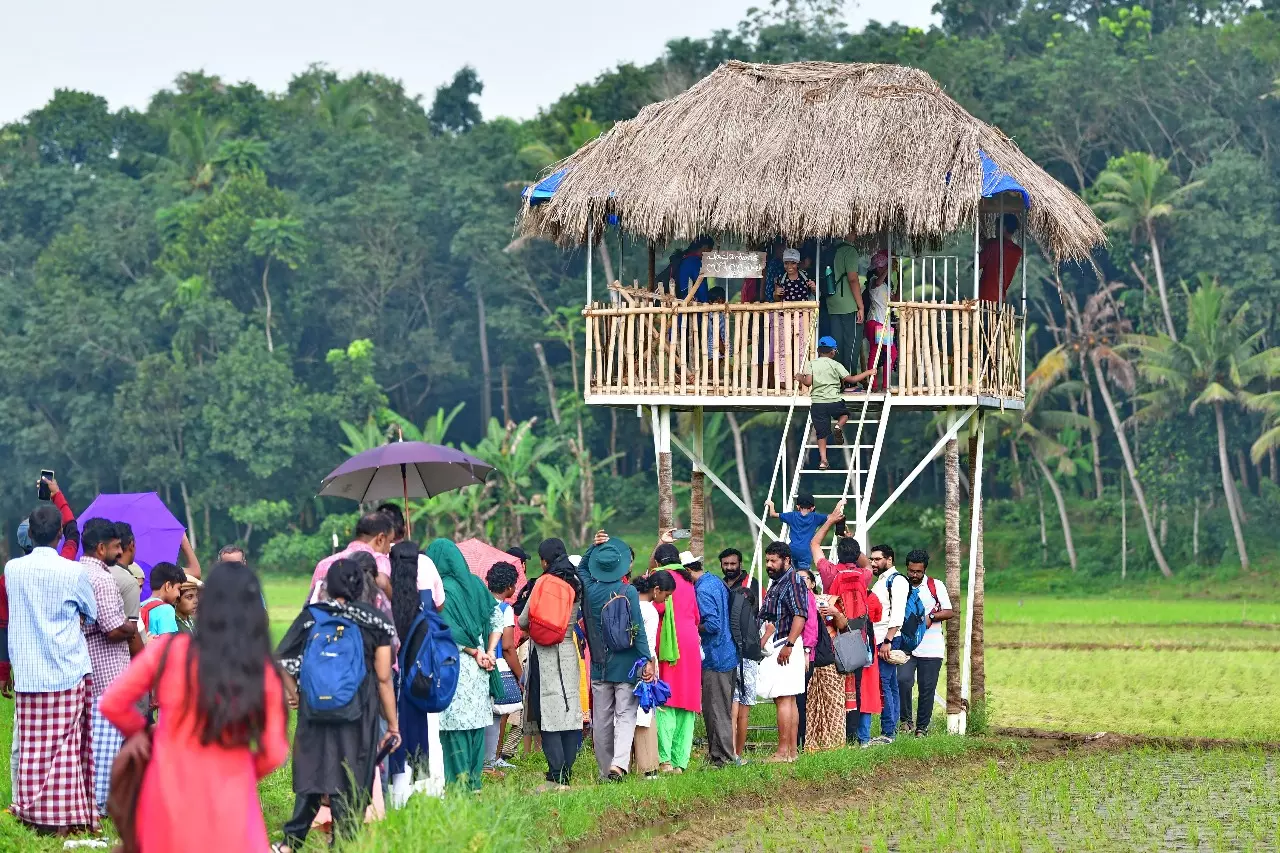
Children at the paddy field.
The teachers take the children to paddy fields, rivers, mountains and markets to get a first hand account of it. “In 2023, we leased out a tiny portion of paddy land in Thiruvananthapuram where our students did paddy cultivation. A couple of months ago, we had our first harvest. Our students did all the harvesting activities including reaping, stacking and clearing. It was a great experience for many as we don’t have paddy fields today (Many paddy fields have been converted to residential properties),” said Gopi.
Once the process was over, Gopi faced an issue. He couldn't find a mill in Thiruvananthapuram where the husk (outer layer of the paddy grain) is separated from the grains. He finally found one still functioning near his ancestral home in Attingal, a town 33 km from Thiruvananthapuram. “I gave them the paddy that we harvested to the students who with their parents went to the mill and did the job. We then distributed the rice to people who helped us in this venture as a token of respect,” he said.
The students recently visited the house of Adoor Gopalakrishnan where an interactive session about the movies that the renowned filmmakers made was held. “I got the opportunity to talk about the movies that Sir (Adoor) has made so far. I did my homework well so I could speak about all his movies without any interruption. We are grateful to our teachers, particularly to Vattaparambil Peethambaran sir, who takes us to an interesting world through his mesmerising voice and expressions,” said Uma, a student at Malayalam Pallikkoodam.
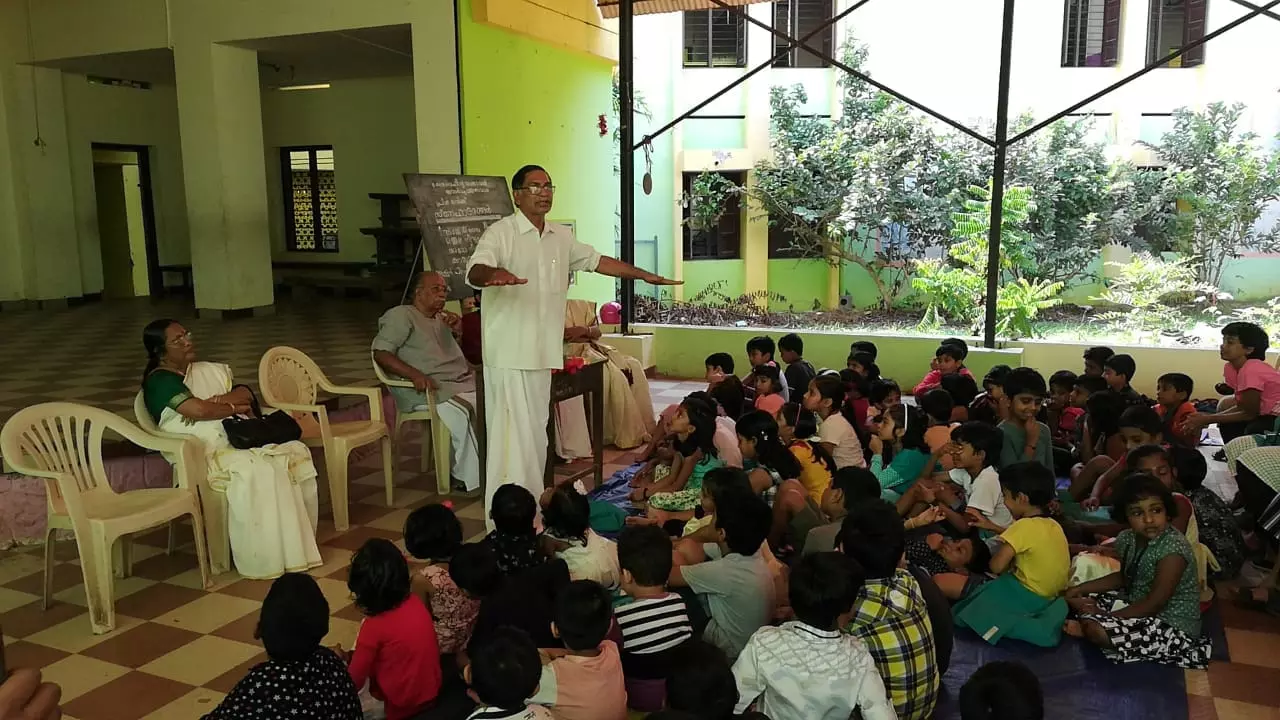
Poet V Madhusoodanan Nair takes a class at Malayalam Pallikkodam.
At least 1,000 students have learnt to read and write their mother tongue Malayalam during the last ten years. Gopi and Jessy are busy as they go and collect traditional kitchen and farming equipment and other materials to educate the children through the elements of folk and culture. At the school, one learns something new every day and the process never ends. Leaves, flowers, tubers, vegetables, fruits and the list never ends. “We are still having a couple of students who joined us when we launched the school in 2014. It has been ten years, and here we are all in the process of learning. And it never ends. Once a student, always a student,” said the couple.
